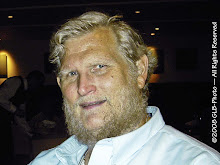
For the creative professional (artist, writer, photographer, etc.), the process of producing their masterpieces (hereafter referred to as works) is anything but a smooth, linear process. It is often accompanied by many starts and stops. The commercial professional, whose livelihood depends upon the production of a finished work, has much inherent motivation to finish it. This is not the case of others who pursue a creative outlet as a hobby, passion, or other activity separate from their 'day job'; this group may include many types of artists, teachers/professors, researchers and others who do not have the built-in motivation of survival as their motivation. Many of the creative works produced today are in this category, especially while they are trying to establish themselves.
So, what is this creative block? Why don't many creative every finish a work? Why are their works often tagged as a 'work in progress'? In a word, it is PROCRASTINATION! Projects, manuscripts, or canvases will often be in this state of partial completion for long periods of time. Why? For the photographer, at least, Jensen points out that the procrastination is "not really the root cause" of the block, but really reflects on a more deep-seated problem — the quest for PERFECTION.
What does this mean? Almost every photographer makes a compromise between producing a work that is good to excellent with whatever resources (assets) are available to him/her. This may be time, money, travel to a location, etc. In their quest for PERFECTION in their work, the dedicated photographer tries to go beyond a reasonable level of work in his/her quest. This is exemplified by the many stories of Ansel Adams printing and re-printing from his negatives for years before he achieved a print that matched the image that he had in his mind when he released the shutter of his camera.
The bottom line seems to be this — "compulsive perfection is procrastination". Why? If the work is left incomplete, it can be improved, thus the state of imperfection is acceptable. Jensen also points out that one must distinguish between a theoretically perfect work from the practically superb work. The latter is obtainable whereas the former is always just out of reach. Jensen goes on to suggest ten ways to help motivate ourselves as creative practitioners to complete a work. These include:
- Provide a structure for the work
- Make a commitment to the work
- Apply peer pressure as part of the work
- Define the work as a project
- Visualize the work
- Define deadlines for the work
- Contract for the publication/display of the work
- Identify starvation as a consequence of not completing the the work
- Face one's own mortality as a threat to the work
- Commit to the submission of the work to a publication, exhibit, presentation, etc.
Next Week: Join us as we examine the first five of these items in more detail. See you then...

No comments:
Post a Comment